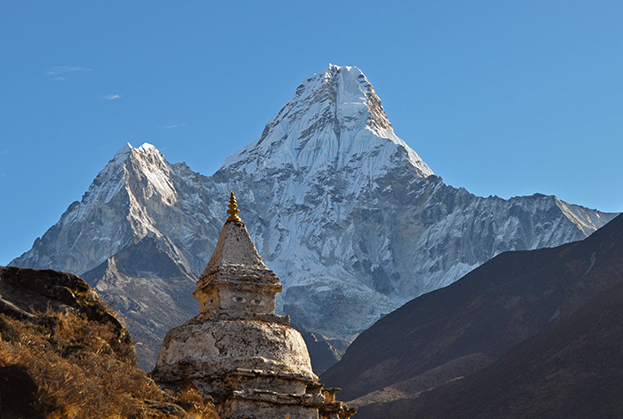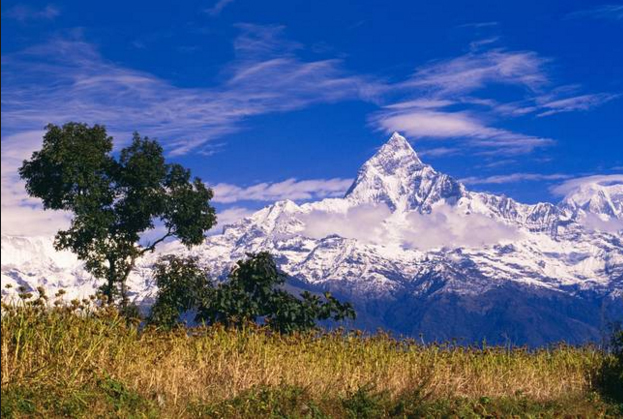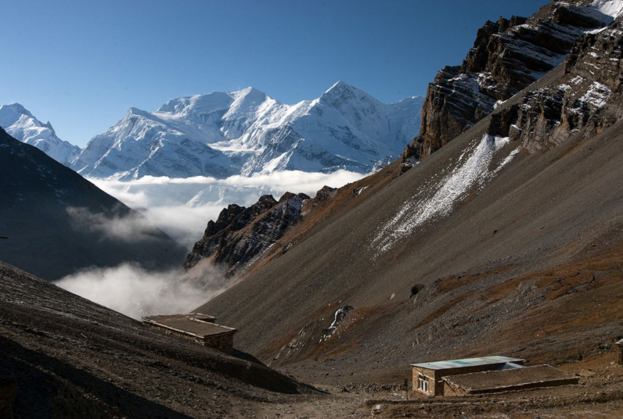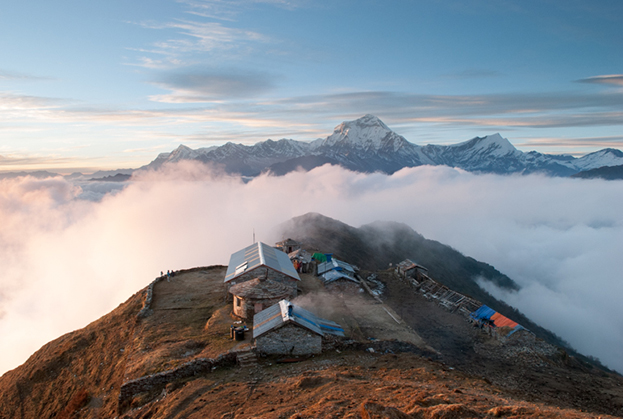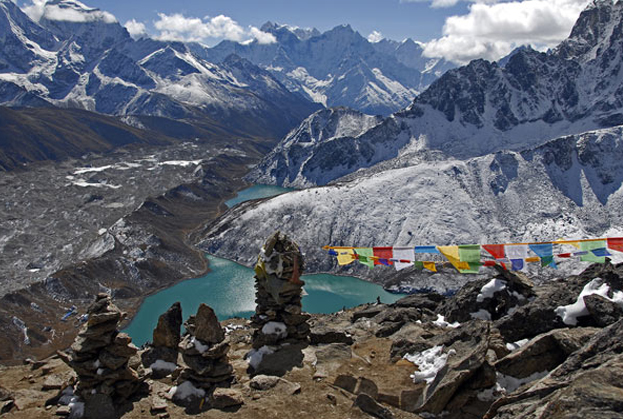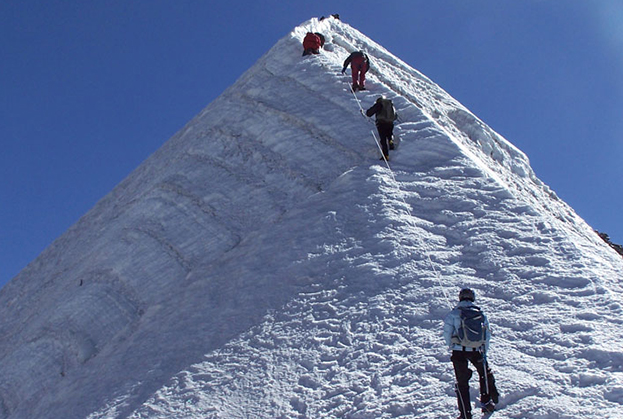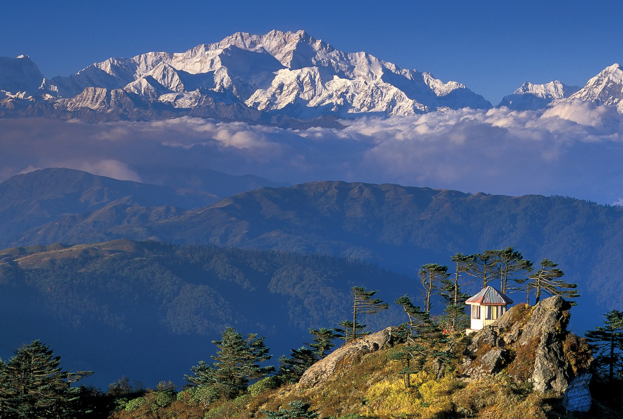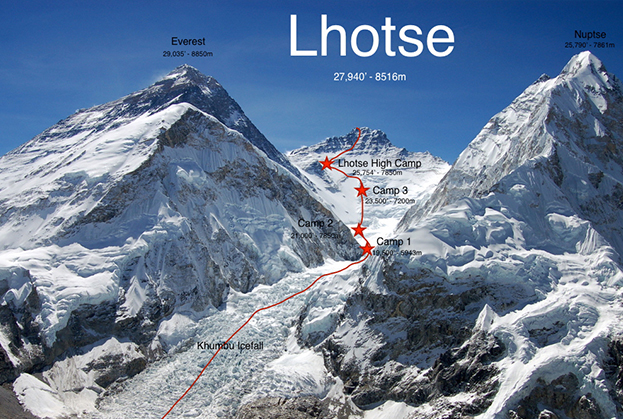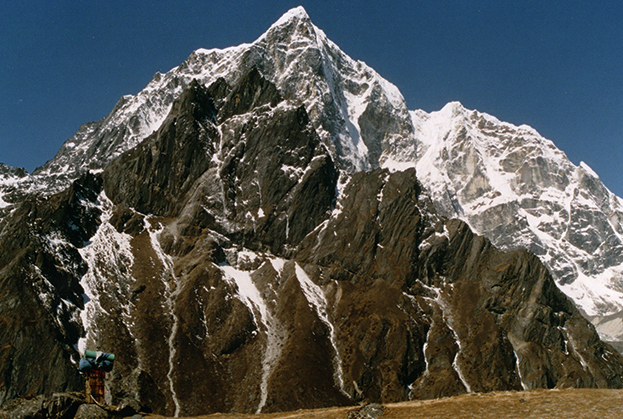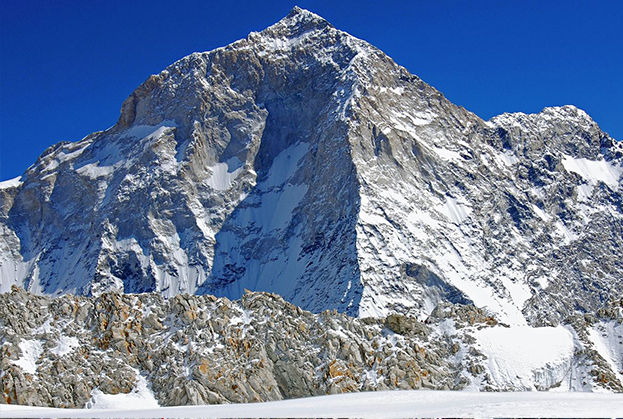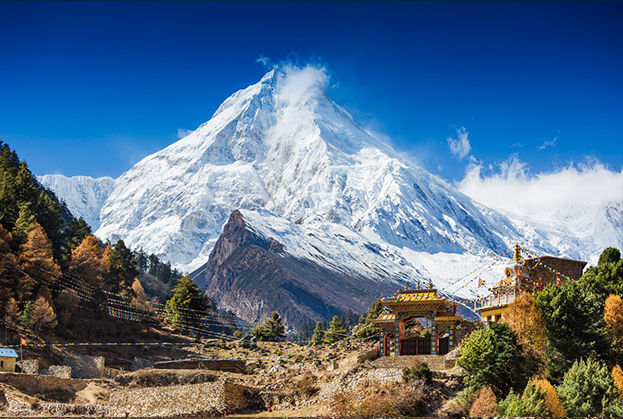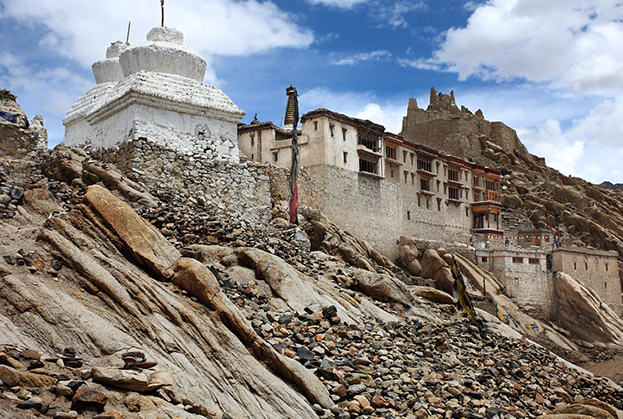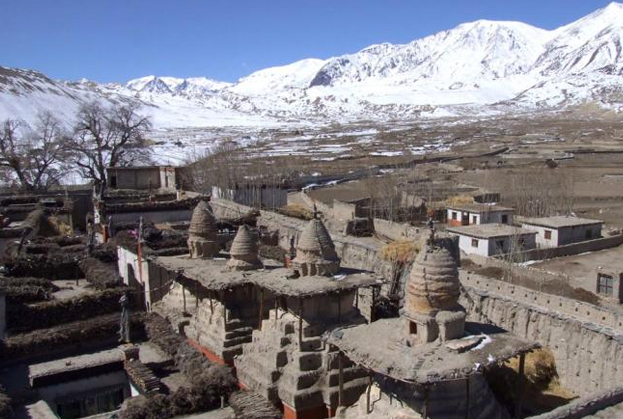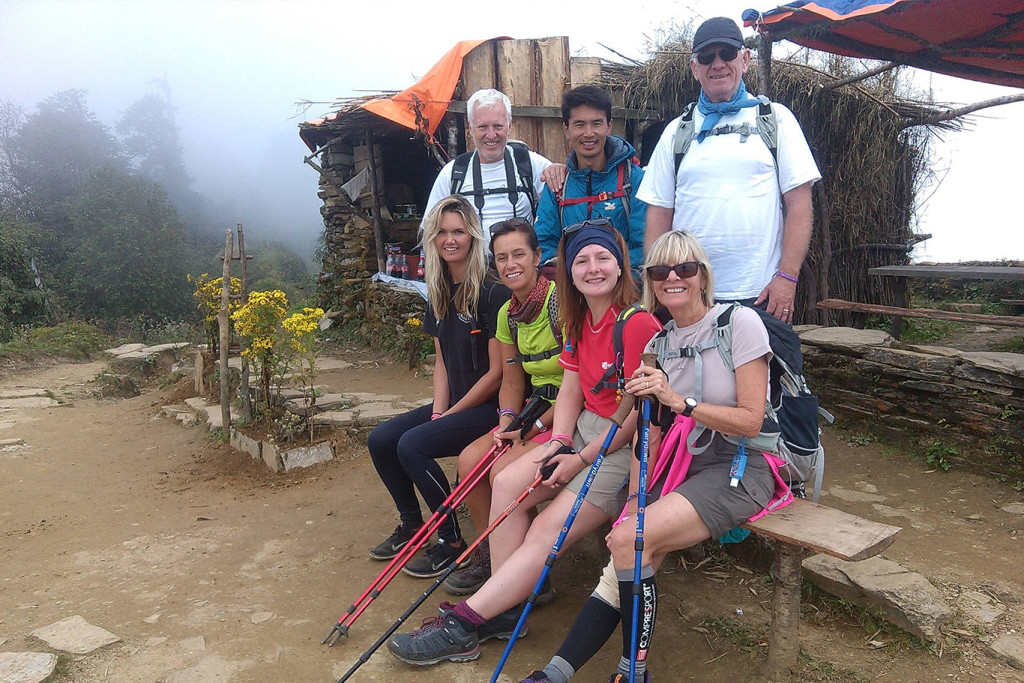 This tiny Himalayan kingdom lived virtually isolated from the outside world for centuries, with its untouched massive mountains, green terraced foothills, thick jungle terrain, awe-inspiring white rivers; and of course its people, who with their rich and colorful culture remain as beautiful as their natural surroundings. Opened to foreigners in the very recent past, Nepal is now readily accessible to the traveler who seeks adventure in the Himalayan foothills & jungles. Nepal is a trekker’s paradise. It offers the most spectacular mountain scenery in the world with more then a dozen of the highest mountains on earth including the highest peak Mt. Everest . Widely known all over the world as the Shangri-La in the Himalayan, Nepal is a pilgrimage everyone in the world would like to make. Thousands of people from all over the world visit the hills and mountains of Nepal every year. Special walking trips to most of the open areas of the country are organized by many different trekking agencies with offices in Kathmandu , the capital city.
This tiny Himalayan kingdom lived virtually isolated from the outside world for centuries, with its untouched massive mountains, green terraced foothills, thick jungle terrain, awe-inspiring white rivers; and of course its people, who with their rich and colorful culture remain as beautiful as their natural surroundings. Opened to foreigners in the very recent past, Nepal is now readily accessible to the traveler who seeks adventure in the Himalayan foothills & jungles. Nepal is a trekker’s paradise. It offers the most spectacular mountain scenery in the world with more then a dozen of the highest mountains on earth including the highest peak Mt. Everest . Widely known all over the world as the Shangri-La in the Himalayan, Nepal is a pilgrimage everyone in the world would like to make. Thousands of people from all over the world visit the hills and mountains of Nepal every year. Special walking trips to most of the open areas of the country are organized by many different trekking agencies with offices in Kathmandu , the capital city.
- Trip List
- Trekking in Nepal
- Peak Climbing in Nepal
- Expeditions in Nepal
- Culture Tours
- Jungle Safari
- Sightseeing
- Rafting
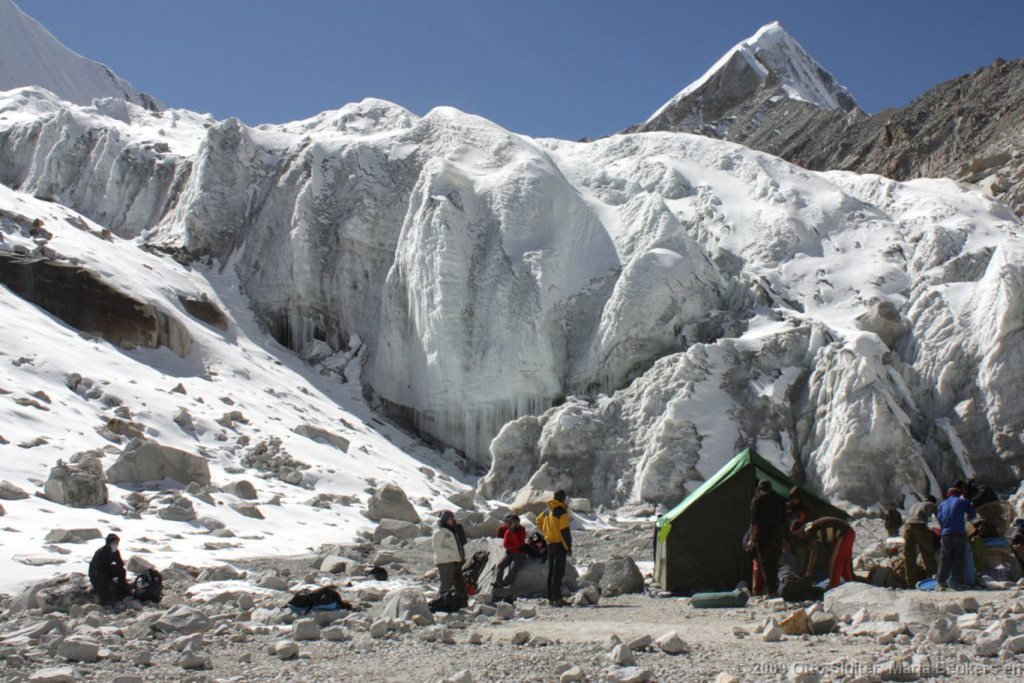 Peak climbing in Nepal Himalayas is a dream for many climbers. With world’s most of high mountains and more than 1300 snow capped peaks.33 of Nepal’s peaks have been designated as ‘Trekking Peaks’. The Nepal Mountaineering Association (NMA) issues permissions for expeditions to these with very simple formalities. The NMA was founded in 1973 with the objectives of promoting mountaineering activities in the Nepal Himalaya, safeguarding the interests of Nepalese involved in expeditions by upgrading their professional and mountaineering skills, popularizing mountaineering activities among Nepalese students and youths, and creating awareness, both at national and international levels, of the need to preserve the beauty of the Himalaya for future generations. Some Trekking Peaks are easy ‘walk ups’, but others are technical and can sometimes be dangerous. In general a team of guides, porters, kitchen crews and both kitchen and camping gear are necessary to undertake expeditions to these peaks.
Peak climbing in Nepal Himalayas is a dream for many climbers. With world’s most of high mountains and more than 1300 snow capped peaks.33 of Nepal’s peaks have been designated as ‘Trekking Peaks’. The Nepal Mountaineering Association (NMA) issues permissions for expeditions to these with very simple formalities. The NMA was founded in 1973 with the objectives of promoting mountaineering activities in the Nepal Himalaya, safeguarding the interests of Nepalese involved in expeditions by upgrading their professional and mountaineering skills, popularizing mountaineering activities among Nepalese students and youths, and creating awareness, both at national and international levels, of the need to preserve the beauty of the Himalaya for future generations. Some Trekking Peaks are easy ‘walk ups’, but others are technical and can sometimes be dangerous. In general a team of guides, porters, kitchen crews and both kitchen and camping gear are necessary to undertake expeditions to these peaks.
Most of these climbing trips take you through wild and virgin alpine regions, out of reach of regular trekkers and which will be a true bliss for you.As mentioned above , peak climbing in Nepal is associated with trekking to the region of that particular peak and has a dual benefit.
In Nepal, peak climbing is controlled and managed by Nepal mountaineering association (NMA). As a member company of NMA , we are authorized to obtain climbing permit and operate the climbing expeditions for our clients.
A lot depends on the quality of your guide and the experience and the arrangements of the trekking company for a climbing trip to end successfully.We believe we have both.We use only the trained and qualified climbing guides (mostly Sherpas) who have previous climbing experience on that particular mountain. We do not prefer to remove acclimatization days to compress the itinerary nor we compromise on the service staffs just to reduce the costs.Without compromising the basics , we always try to provide our trips at most reasonnable costs possible.We work together with you to plan your climbing trip and realize your dream to be atop a Himalayan peak.
Not all the peaks are open for climbing. Out of the 33 peaks open for climbing we have featured here some of the most popular peaks with our past clients.Booking is open for 2010 spring and autumnfor the below mentioned peaks
Mera Peak Climbing in Nepal 2012 & 2013 in Spring & Autumn:
It is one of the highest peaks in Nepal Himalaya which is located in south of Everest & was first scaled in 20th May 1953 by J.O.M. Roberts and Sen Tenjing.
It is gradually becoming popular among trekkers and novice climbers to have the feeling of hiking and climbing on snow and experiencing trekking in remote part of Khumbu region. Physically fit and have an extrovert sense of adventure to be need to ascend Mera Peak .
The ascent of Mera is generally technically straightforward that requires little more than crampons and ice axe. We will fix ropes where necessary and our Guides and Sherpas will assist you as much as possible. After a mountain flight from Katmandu, our trek will begin by heading southeast from Lukla. We will walk along a high, rocky ridge through dense forests and across several streams before reaching the pass that will take us into the remote and largely uninhabited Honku Valley. Trekking and Camping in this wild land of Himalayan pine forests is indeed an impressive experience.
We will proceed to Khare (5,099m) and set up camp. Our ascent will follow the glacier that leads to Mera la (5,415m) and on to high camp where we will prepare for our early morning summit. From high camp, we can take in a sweeping view of Kanchanjangha, Chamlang, Makalu to the east, Everest and Lhotse to the north and Amadablam and Cho-Oyu to the west. This view is undoubtedly one of the most stunning in all of Nepal. With good conditions, we will summit Mera Peak the following morning. As we make our way back down the valley to Lukla for our flight back to Kathmandu, you will have completed a demanding trek to achieve the summit of one of the more beautiful mountains in Nepal.
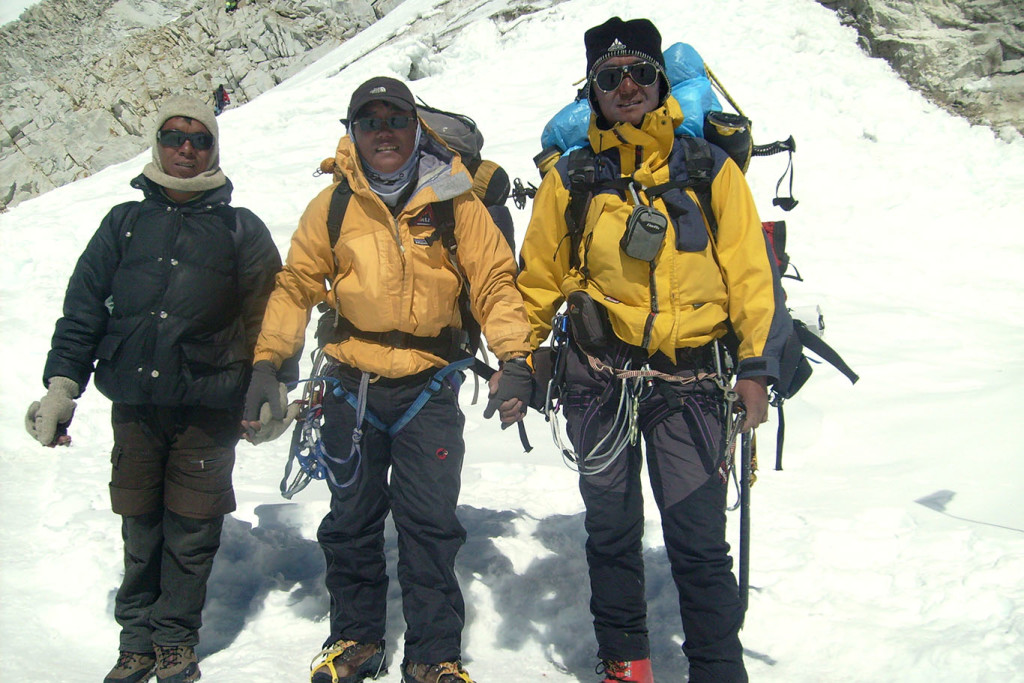 Nepal is one of the most spectacular countries and popular adventures destination on earth, inhabited by extremely friendly and endearing people.
Nepal is one of the most spectacular countries and popular adventures destination on earth, inhabited by extremely friendly and endearing people.
You can visit Nepal to enjoy its natural beauty, rich cultural heritage, towering pagodas, spectacular Himalayan ranges with world’s highest peak and more. Travel in Nepal is to convert your dream into reality. You can reward yourself by choosing numerous possibilities to explore Nepal , trekking tours such as trekking, climbing and mountaineering expeditions. It has also attraction with different flora and faunas. It is a small country in south Asia situated between the two giant nations, India &China .
This tiny Himalayan kingdom lived virtually isolated from the outside world for centuries, with its untouched massive mountains, green terraced foothills, thick jungle terrain, awe-inspiring white rivers; and of course its people, who with their rich and colorful culture remain as beautiful as their natural surroundings. Opened to foreigners in the very recent past, Nepal is now readily accessible to the traveler who seeks adventure in the Himalayan foothills & jungles. Nepal is a trekker’s paradise. It offers the most spectacular mountain scenery in the world with more then a dozen of the highest mountains on earth including the highest peak Mt. Everest . Widely known all over the world as the Shangri-La in the Himalayan, Nepal is a pilgrimage everyone in the world would like to make. Thousands of people from all over the world visit the hills and mountains of Nepal every year. Special walking trips to most of the open areas of the country are organized by many different trekking agencies with offices in Kathmandu , the capital city.
Mountaineering in Nepal is one of the most attraction and courageous parts rather than high adventure trekking. This beautiful tiny Himalayan king
dom is one of the paradise that has meet anyone who wish to conquer high mountains by their own foot. This small kingdom is the land of world’s top most highest peaks including Mt. Everest is majestic crowned to the north. Eight of the world’s 14 peaks over 8000m including Mt. Everest (8850m), Makalu (8463m), Lhotse (8516m), Cho Oyu (8201m), Kanchenjunga (8586m), Annapurna (8091m), Dhaulagiri (8167m), Manaslu (8163m) are only located in Nepal.
Mountaineering and trekking in Nepal has relied heavily on the progress and inspiration developed by various expeditions to Everest. Mush of the attraction of Nepal in the early days resulted from the discovery that the highest peak in the world lay within the forbidden and isolated kingdom.
Beside Royalty and other government liable charges, Makalu Adventure company provides its best service with experienced climbing Sherpa Sirdar in very negotiable price. Our Sherpa Sirdar are already success to summit 8000m including Mt. Everest, Cho Oyu, Shisapangma and Makalu.
Embarking on tour in Nepal is one of the best ways to savor the lifestyles and the culture that has charmed the people all over the world. A tour in Nepal is traveling from one place to another in a vehicle accompanied by a guide who will introduce you to the various places and show you the sights and sounds of the country. Nepal, the land of splendid nature and rich culture is waiting for your exploration through its different facets.
Nepal tour gives you an opportunity to explore three different regions of the country. Tour package will give you a chance to appreciate the charming architectural heritages….Through out its long history, Kathmandu, the capital city of Nepal has been a unique patchwork of cultural diversity. Kathmandu, Patan and Bhaktapur are the places where temples, shrines and palaces were made and re-made. It is the melting pot of new and old tradition. From Kathmandu valley, Nepalese art and culture were also developed and refined in many stages. Kathmandu, Patan and Bhaktapur each have their own artistic, architectural and historical background. Beyond, the cities there are hundreds of temples and shrines, traditional villages, agricultural scenes and many more beauties present in Nepal. In Kathmandu valley and around, you will be overwhelmed with fascinating architectural works including palaces, squares and temples in their exquisite Nepalese arts. Besides from a discovery of harmony of Buddhism and Hinduism in and around the Kathmandu Valley, you are granted a chance to trace back to the life of the “Enlightened One” or the Buddha, the founder of Buddhism in Lumbini. Kathmandu, a living museum city has been a cultural hub of Nepal for thousand of years.
Pokhara the valley of lakes and mountains and the gateway of trekking; it is then unsurprising that this city endows an array of preciously historical and cultural heritage. It is not just that the mountains are the only basic phenomena that attracts tourist visiting the majestic Kingdom but the diversity of culture, the most hospitable people on earth and the warmness received from them as well as other various natural incentives can easily allure and create the implausible charm to anyone visiting the country.
Culture Tours In Nepal:
GLIMPSE OF NEPAL
Visit 2000 years old Buddhist shrine Swyambhunath, situated on the top of the hill west of the city the most popular and instantly recognizable symbols of Nepal. The temple is colloquially known as the “Monkey Temple.
MAGNIFICIENT NEPAL
The place is beautiful, traditional and also gives a panoramic view of the Himalayas Cho-Oyu in the East to Himalchuli in the west.
CULTURAL SPECIAL
Visit Mayadevi Temple, Myanmar temple and the Lumbini museum. Lumbini is the biggest pilgrimage for the adherent of Buddhist religion in the world.
SUNRISE SPECIAL
The most beautiful temple of Nepal, the 15th century palace of 55 windows, Golden gate and other place of Interest.
HIMALAYAN SAFARI
Jungle activities including Nature walk, Elephant Safari, Canoeing, Bird watching, Tharu culture dance program, natural history & flora & fauna of the national park etc.
NATURAL BEAUTY
Nepal’s most beautiful natural valley, which is also the most popular tourist destination. The Annapurna, Machhapuchere (Fishtail) and uncountable Mountains always stand high welcoming every visitor with a smile.
BEAUTY OF NEPAL
Temple of living goddess Kumari, the Jagannath temple, 17th century temple known for colorfully painted erotic carvings, Kasthmandap temple a three story temple built from a single tree in 12th century.
Trips Package
Cost included
Hotel we provide twin sharing rooms with attached with all the facilities. Single client has to pay Single Supplement.
Meals
All the prices are based on BB (Bed & Breakfast) basis. Only Royal Chitwen National Park will be in Full board.
Transportations
02-03 Pax – Car, 04-5 Pax – Van, 06-10 Pax – Hiace, 11-19 Pax – Coaster / M ini –bus (19 seats), 19+ -Bus.
All the vehicles we use will be in good condition, drivers will be our company employees and will take good responsibility for every group.
Guide
Basically we offer experienced English speaking, We can make flexible arrangement according to clients’ request. German, French, Japanese, Italien, Chinese, Spanish etc speaking guides also available. Pls inform us in advance.
Price
Airport Pick up, Internal flight tickets with Airport Tax. Hotel in BB Basis, Guide, All transportation, All the monuments Entrance fees, Departure for next destinations.
Group Leader
For group of the 10 or above full paying persons, Tour leader will be free of cost only in Nepal.
COST EXCLUDES:
Meals except breakfast, all expenses of personal nature, Airport Departure Tax, Charge for photography, Air ticket reconfirmation fee, Insurance, Emergency evacuation, Tips for Guide & Driver.
Nepal’s rich bio-diversity renders it ideal as an eco-tourism destination. As the Himalayas are famous for the trekking and mountaineering activities so does the Terai low land tropical jungle is one of the best wildlife habitat in the subcontinent making it a best for a jungle safari activities. Nepal has total 09 National park, 3 wildlife reserves, 6 conservation areas and 1 hunting reserve covering a total of 28,999 sq Km which is 19.70 % of the country’s total land. National park and wildlife reserve area is mainly covered by Sal forest with the balance a mixture of grassland, savannah and riverine forest. It is here that visitors get sight of most wildlife. Journey into the deep jungle on an elephant’s back or on a 4WD with expert naturalists to view wild animals in their natural habitat for a great experience in Nepal wildlife safari. Our entire Jungle safari package program includes the canoe rides, nature walks, birds watching excursions and quick tours around the villages to discover unique culture and traditions of the local village people. Cultural program performed by the local is another highlight of your trip in Nepal.
Nepal has 16 national parks, wildlife reserves and conservation area, occupying 16% of its total geographical area. Jungle safaris on elephant back or Jeep rides are offered at the Parsa Wildlife Reserve, Royal Bardia National Park, Royal Chitwan National Park and the Royal Sukhlaphanta wildlife Reserve, all
located in the terai.
Among them, there are two famous two National Parks Royal Chitwan National Park, & Bardia National Park where you can explore the wild-life getting yourself deep into the heart of the forest, while the others serve as the natural habitat to thousands of animals including Snow-Leopard, Gharials, Crocodiles, Ram, Bob Cats, endagered Red Panda, Elks, Deers, Anteplores, Kasturi, monkeys, hundreds of birds (in fact Arun Valley has the largest population of birds (650+) and butterflies (800+) in the entire world), and butterflies.
We cater special package wildlife safari trip in Chitwan and Bardia National parks. Safari trip can be combined with any other adventures – trekking, rafting, cultural tour, Tibet tours or peak climbing trips.
History Of Kathmandu Valley
The legend that the Kathmandu Valley was formed from a vanished lake is in fact quite true. The uprising of the Himalaya trapped rivers draining south from Tibet, creating a vast lake that eventually burst its banks and drained away around 10,000 years ago.
As people settled the valley from the north and south, it
became the biggest clearinghouse on the trade route from India to Tibet. Himalayan missionaries and saints transferred Buddhism across the Himalaya into Tibet and centuries later migrating Tibeto-Burman tribes carried Buddhism back into Nepal, fusing Tantric Indian beliefs with the ancient Bön religion of Tibet. This has resulted in a fascinating hybrid culture, where Hindu and Buddhist beliefs jointly infuse Nepali life.
Historically, the Kathmandu Valley has been the homeland of the Newars, great traders and craftspeople, of mixed Indian and Tibeto-Burman origin. Much of the iconography, architecture and culture associated with Nepal today is actually based on Newari culture. For more on the customs and traditions of the Newari.
The first formal records of Newari history come from the Licchavi era (AD 400 to 750), but the golden age of the Newars came in the 17th century when the valley was dominated by three rival city-states – Kantipur (Kathmandu), Lalitpur (Patan) and Bhadgaon (Bhaktapur) – all competing to outshine each other with architectural brilliance. The reign of the Malla kings saw the construction of many of Nepal’s most iconic palaces, temples and monuments.
The unification of Nepal in 1768–69 by Prithvi Narayan Shah signalled the end of this three-way struggle for supremacy. Nepali, an Indo-European language spoken by the Khas of western Nepal, replaced Newari as the country’s language of administration and Kathmandu became the undisputed capital of the nation.
Highlights
Lose yourself in Patan’s courtyards on a walking tour, soak in the glorious Newari architecture of its Durbar Sq and visit Patan Museum, the best in the country
Explore the fascinating backstreets of, Nepal’s best-preserved medieval town
Join the Tibetan exiles on the kora (clockwise circuit) around the enormous Bodhnath Stupa Have a hiking or biking mini-adventure in the little-visited towns of the Southern Valley – Kirtipur, Bungamati and Chobar
Get the pulse racing on a bungee, canyoning or rafting trip at the adventure resorts of Borderlands or the Last Resort ,just a stone’s throw from the Tibet border
Escape the crowds and relax at little-visited Nuwakot , a historically important village with fine architecture
Nepal’s People
It is often said that while you first come to Nepal for the mountains, you return here for the people. From quietly protective Sherpa guides to welcoming Tibetan hotel owners and Newari shopkeepers, all Nepalis receive guests with respect and a namaste greeting. They’re quick to smile in the most trying circumstances, and you’ll rarely hear a raised voice or an angry word anywhere you go. It’s one of the great joys of travelling here. See Click here for more about Nepal’s people.
Nepal is a land of numerous world class rivers which provide fun and exciting river rafting adventures. You can have a day of rafting or choose an extended trip that lets you camp on the river and enjoy the culture and beauty that surrounds you. Rafting in Nepal is one of the most popular adventure and it is consider as paradise land for river runners. There are various grade of whitewater rafting trips possibly vary with interest and choice. Those who are looking for long days expedition type run may join for Sun Koshi and Karnali rafting trip together combining with wildlife safari tour in nearer National parks. For short rafting and family run may go to raft on Trishuli and Seti for smooth class of run and experience. If you have any quest about rafting in Nepal let us know your interests we will provide you the best option and package offer.
Rafting in Different River of Nepal
Nepal is blessed with some of the wildest and most spectacular rivers in the world. The combination of beautiful mountain scenery, exhilarating white water rapids, warm water, and fascinating cultural opportunities make Nepal one of the premier places to go white water rafting. Eco Trek offers fun and exciting rafting trips on the best rivers in Nepal. The best time for rafting in Nepal is usually September to early December and March to June. This is when the weather is best and the water is the warmest.
Eco Trek runs two different types of river trips depending on how long you want your trip to be and what river you want to raft. The first type is a day trip on the river. We provide transportation to and from the river as well as a full day of rafting. This is the perfect trip for anyone who wants to get a feel for white water rafting or doesn’t have time for an overnight trip. Generally we run most of our day trips on the Trishuli and Bhote Koshi rivers.
Our other type of trip consists of several days of rafting while camping overnight next to the river. This gives you plenty of time to swim and relax on some of the white sand beaches on the river. We have porters to set up camp and a personal cook who will prepare safe and tasty meals. Camping trips require a minimum of 6 to 8 clients in a group it helps if you can find others who are interested in rafting. During the season we have many trips leaving several times a week so it isn’t hard to find a group. And like every Eco-Trek trip, we want to provide you with the vacation of a lifetime so tell us what you want. We can combine rafting with trekking or jungle adventures or both if you wish.
Rivers are rated for their difficulty on a scale of class 1 – 6.
A class 1 river has a slower moving current with little or no obstacles.
Class 2 & 3 rivers generally are fast moving with some obstacles and smaller to medium size rapids.
Class 4 rivers have long, continuous sections of white water and large waves which requires strong paddling and good teamwork in the boat.
Class 5 rivers have powerful prolonged sections of rapids and big holes, which requires very strong paddling and preferably some previous rafting experience.
Class 6 is considered to be almost impossible to run.

